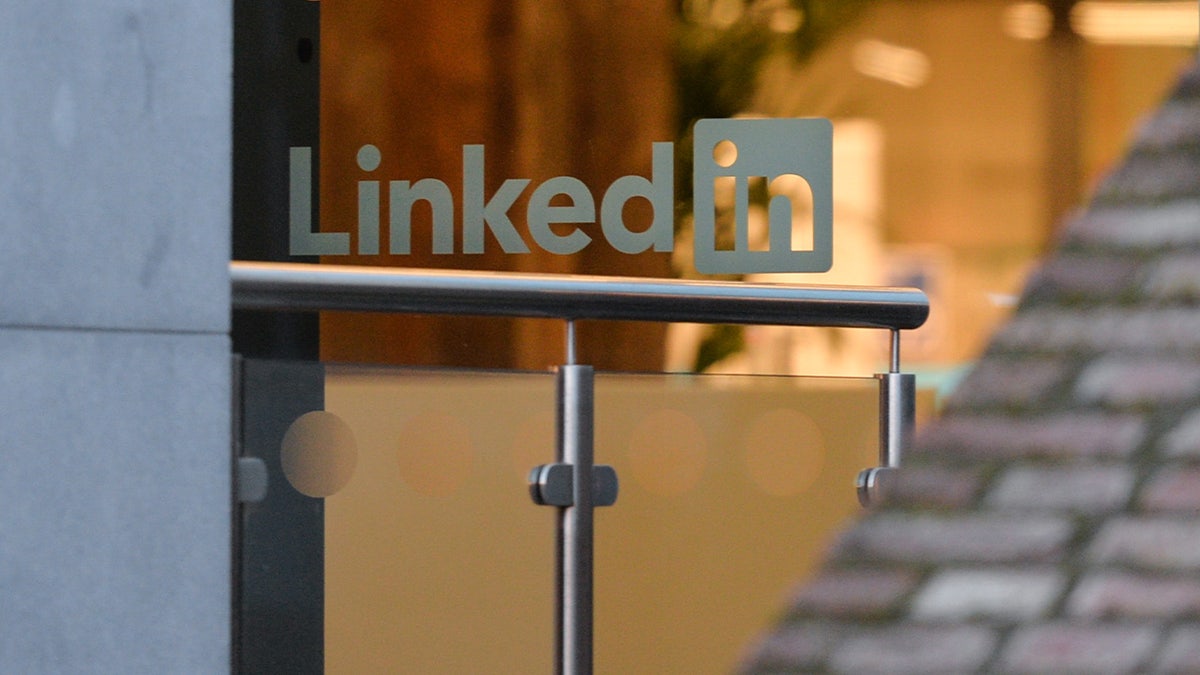Were there discriminatory hiring practices at play?
America First Legal’s Gene Hamilton discusses the discrimination complaint against Unilever, Ben & Jerry’s parent company, on ‘Fox News @ Night.’
An advocacy group is pressing LinkedIn after the social media company used their "Diversity in Recruiting" ("DIR") feature to "diversify the group of candidates displayed to recruiters."
The Equal Protection Project of the Legal Insurrection Foundation (EPP) is calling for the career social media company to change their policy and not allow a "manipulated pool of candidates."

In this photo illustration the logo of LinkedIn can be seen on a smartphone on March 10, 2022 in Berlin, Germany. (Thomas Trutschel/Photothek via Getty Images)
The call for change comes following last week’s U.S. Supreme Court decision to dismantle affirmative action practices in college admissions
"The Supreme Court recently held that universities may 'never use race as a stereotype or negative' and a 'student must be treated based on his or her experiences as an individual—not on the basis of race," Bill Jacobson, president of the EPP, told Fox News Digital.
"LinkedIn's filtering of demographic data to manipulate pools of applicants to achieve diversity violates these principles," Jacobson continued.
According to LinkedIn, the social media site's DIR feature uses candidate's race, sexual orientation and gender to "surface qualified members" in order to "diversify the group of candidates displayed to recruiters .... from companies that have made public commitments to diversity, equity, and inclusion."
Although users can opt out of the DIR feature, LinkedIn uses the feature to help recruiters find a "more diverse group of qualified candidates."
"Some people are promoted to potential employers based on the candidates' protected status, which runs counter to LinkedIn's own non-discrimination rules," Jacobson said to Fox News Digital. "What's worse, candidates may never know how they have been treated in this filtering system based on their protected status, and it's not even clear if recruiters/employers are aware they are receiving a manipulated pool of candidates."

LinkedIn launches 24 hours stories, following other social networks Facebook, Instagram and Whatsapp. (Lorenzo Di Cola/NurPhoto via Getty Images)
According to the Equal Employment Opportunity Commission (EEOC), a potential employee is protected from employment discrimination based on race, color, religion, sex under the candidates' protected status.
DEI PROGRAMS COULD CRUMBLE UNDER WEIGHT OF SCOTUS RULING: EXPERTS
"It is no excuse that some candidates opt-in to having their demographic data used," Jacobson added. "LinkedIn asking candidates to consent to a discriminatory system does not excuse the discriminatory system."
"LinkedIn asking candidates to consent to a discriminatory system does not excuse the discriminatory system."
The Equal Protection Project alleged that LinkedIn's algorithm favors diverse candidates-while discriminating against candidates who either choose not to divulge protected status information or candidates who do not meet diversity requirements.
"LinkedIn's DIR program is particularly pernicious because it builds racial and other protected status classifications into the hiring process through demographic filtering and promotion," Jacobson said. "This built-in discrimination operates in the background through algorithms at the LinkedIn hub that connects candidates to recruiters/employers to impact the entire LinkedIn-related hiring process."

LinkedIn logo seen at the entrance to LinkedIn EMEA Head Office in Dublin, Ireland. (Artur Widak/NurPhoto via Getty Images)
Since The Equal Protection Project's initial letter to LinkedIn, the social media company added a sentence stating that its "hiring products do not have filters that enable our customers to filter out candidates on the basis of sensitive or protected categories of personal demographic data (including race/ethnicity, gender, having a disability, sexual orientation or transgender status)."
"Discrimination by algorithm is still discrimination."
CLICK HERE TO GET THE FOX NEWS APP
"Discrimination by algorithm is still discrimination, and LinkedIn needs to stop," Jacobson said.
A LinkedIn spokesperson told Fox News Digital in a statement, "We believe all of our hiring products and algorithms comply with U.S. laws and regulations relating to discrimination on the basis of protected categories. Many hirers use LinkedIn to connect with diverse groups of qualified candidates for their roles."
"We often evaluate new ways to ensure that our tools recommend qualified candidates, but we don’t enable recruiters to filter out or exclude applicants based on their race, gender or other protected demographics. People who use LinkedIn choose whether to share their demographic information and can control how their data is used through their settings," the statement continued.






















